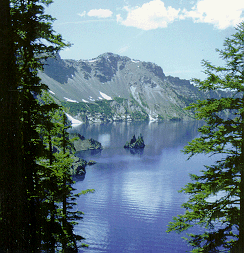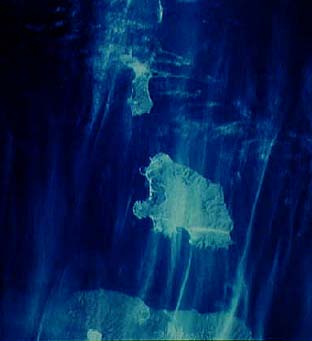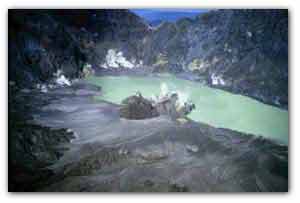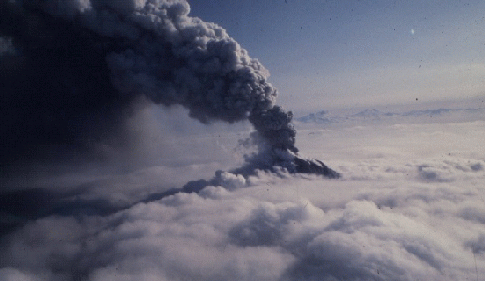
Volcanoes Around the World


By Ashley H.



Down below the surface of Earth is the mantle. When the rock in this mantle becomes too hot because of extreme temperatures, it melts and forces itself up as magma through the crust and up to the surface. Here it releases pent-up gases and the volcano erupts. Once this magma has reached the surface, it is called lava. However, there are many types of lava, and some are slower than others. Some move more quickly though. It all depends on the type of rock that is melted inside the mantle.
A great number of the volcanoes that erupt around the world occur on plate
boundaries. Volcanoes occur at convergent boundaries, divergent boundaries,
and hot spots. An example of a volcano located at a convergent boundary
would be the stratovolcano Mt. St. Helens in Washington State. A
hot spot causes shield volcanoes such as the ones which created the Hawaiian
Islands down in the Pacific Ocean. The divergent boundaries can also
cause shield volcanoes which are known to have sloping sides because of
the slow moving lava.


This volcano actually changed the Earth's climate. The sulfuric acid droplets from the volcano in the stratosphere covered the entire planet. The energy from the sun was blocked from the Earth, so the Earth in turn just cooled off. This droplets causes other damage to the Earth as well. They not only blocked the sun, but caused low ozone levels. Indirectly, the sulfuric acid made other problems. If you would like to learn more about this eruption and the effects it had on Earth, please click on the title to this section to be taken directly to another site.
This 4,200 meter high volcano had suddenly become much smaller. On
April 17 the eruption ended. The volcano had now shrunk to 2,850
meters. Tambora had ejected about 1,700,000 tons of debrea.
The volcano didn't exactly leave the city peaceful for a while. It
actually rumbled for about 3 months after the 17th of April. To learn
more about Tambora, please click on the italicized title above.
There
are 12 different types of volcanic hazards. Some are more hazardous
than others. These types of hazards are volcanic earthquakes, directed
blast, tephra, volcanic gases, lava flows, debris, avalanches, landslides,
and tsunamis, pyroclastic surge, pyroclastic flows, and lahars. The
least dangerous of all these is the lava flows because the lava moves so
slowly that there is usually enough time to evacuate the area where the
volcano is located before the lava ever reaches a city or kills someone.
Lahars on the other hand are one of the most dangerous volcanic hazards.
Lahars usually move much quicker than any other hazard and can float automobiles,
sea crafts, and buildings.


Falling ash is yet another type of volcanic hazard. Pent-up gases
erupt violently from this explosive eruption. These eruptions are
all dangerous in some ways, but not all are as dangerous to human life.
We can usually escape from the hazards of a volcano before anyone is killed
or injured when the type of hazard in progress can be detected soon enough
or the eruption is slow enough for residents nearby to escape. To
learn more on the hazards of a volcano, just click on the title of the
section and you will be taken directly to another site for more information.
Eruptions are caused when rock in the mantle is heated and melted. Since the solid rock is so much denser than the heated rock or magma, the magma rises to the top and flows out of the volcano onto the surface. Here the magma is defined as lava. How the magma is exploded onto the surface all depends on the form of magma. When these eruptions take place a volcano is described as active rather than dormant. To learn more about this subject, please take the time to click on the title to this paragraph and read what other sites have to contribute.


![]()